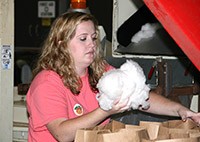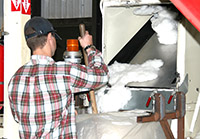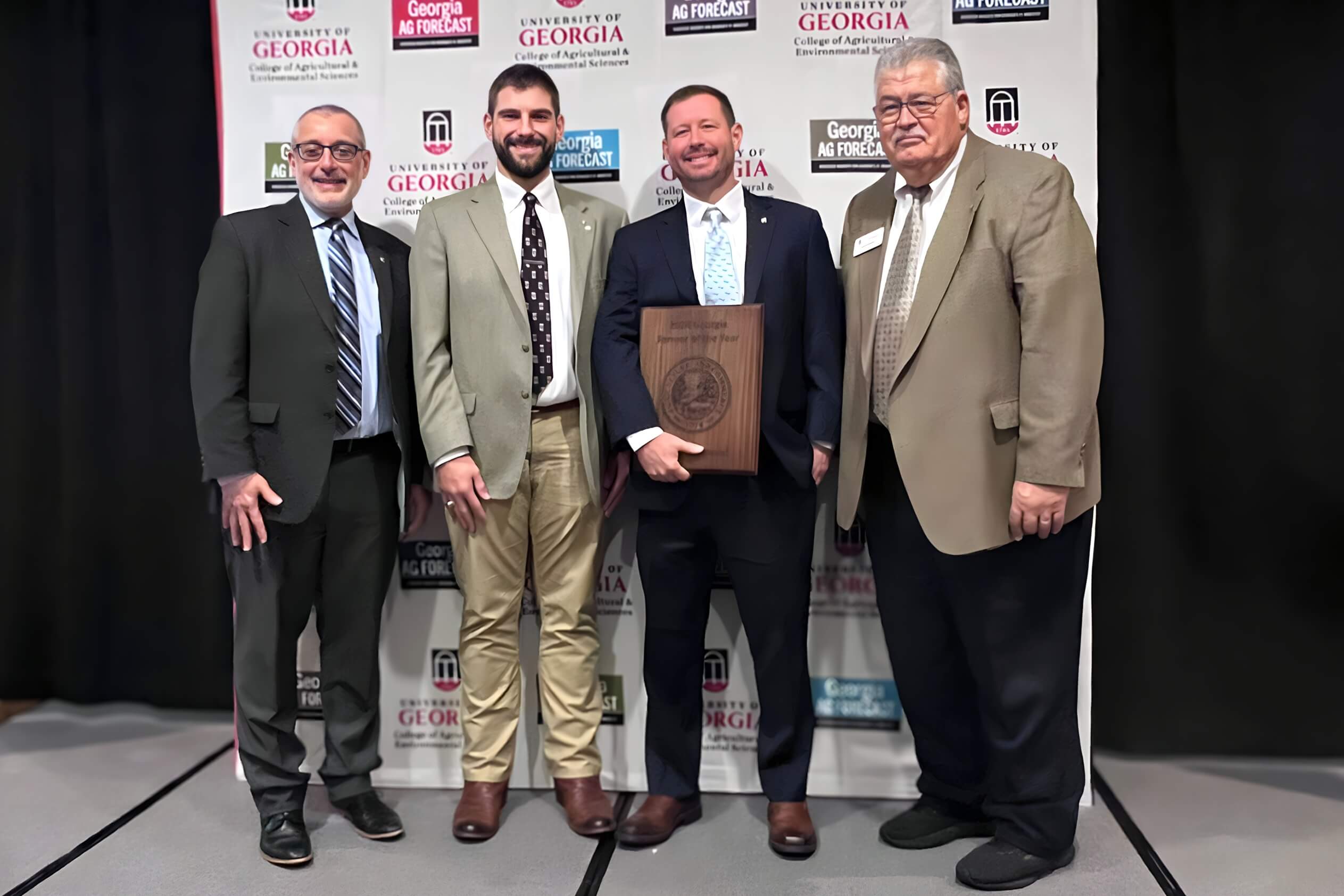The microgin at the University of Georgia Tifton Campus may be small, but it makes a huge impact.
The microgin is an integral part of the UGA Cotton Team’s efforts to produce improved Georgia cotton, a crop that exceeded $713 million in farm gate value in 2015. Kane Staines, research gin manager at UGA Tifton, said the quantity of cotton produced is important, but it is secondary in relation to the quality of Georgia-produced cotton.
“The idea behind the microgin was to have a real-world way of processing small cotton samples from research plots. Georgia had been experiencing significant economic losses due to poor-quality cotton during that time, and the industry pulled together to address the issue,” Staines said. “In 2003, UGA scientists and the Georgia Cotton Commission, with input from the Southeastern Cotton Ginners Association, the Southern Cotton Growers Inc. and the private sector, developed a plan to build the facility.”
Staines said he looks at various quality factors during the ginning process – micronaire, staple length and uniformity of fibers – among other qualities that are important to textile mills.
Gin turnout, which is the weight ratio of lint to seed in cotton, is the primary factor in determining how much lint is produced. Some factors, such as moisture in the cotton, trash content, irrigation and the cotton variety, can affect gin turnout.
“The cotton comes from a field plot, and after it is ginned and cleaned, we weigh the lint,” Staines said. “We then do some simple math to determine the percent gin turnout. Fiber samples are graded, usually by the United States Department of Agriculture classing office in Macon, (Georgia), or Cotton Incorporated.”
Staines said that many UGA researchers send cotton samples to the microgin.
“Researchers such as entomologists, agronomists, plant pathologists and many others submit samples to the gin,” Staines said. “After I look at the quality and quantity of the cotton, then I send the data back to the researchers. They look at one treatment versus the other to see if there are correlations or differences from treatment to treatment.”
The microgin at UGA Tifton has the same size profile as a commercial gin, but it has only a tenth of the commercial gin’s production capabilities. Staines said the gin operates just like a normal gin.
“Modern cotton gins like ours put the seed cotton through a series of precleaning machines,” Staines said. “These machines get all or most of the trash out of the cotton before it ever gets to the actual gin stand. Once the cotton passes through the gin stand and the seed is removed, the lint goes through another series of cleanings.”
Staines said the microgin, like all gins, produces waste, including the cotton seed and gin trash, which consists of sticks, burs, fragments of leaves and anything that’s not cotton or seed. Seed is either crushed for oil or used for livestock feed. Trash is often used as a soil amendment.
Staines said the ginning season is usually determined by the weather, which dictates the duration of the harvesting season.
“If we have a really rainy season, the farmers can’t harvest and the ginning season will run into February or March,” Staines said. “Usually, the microgin starts running around mid- to late September, and it continues until the end of December. In a good year, the ginning season lasts about four or five months.”







.png)
